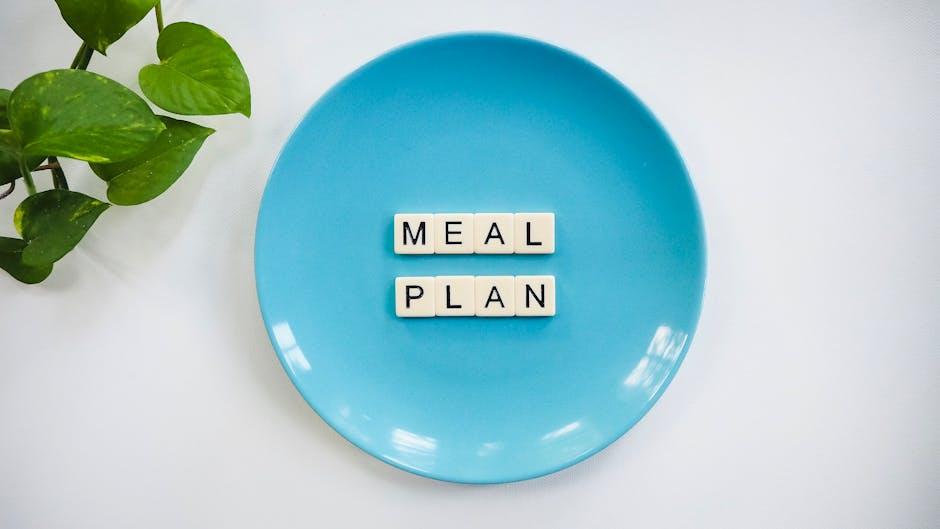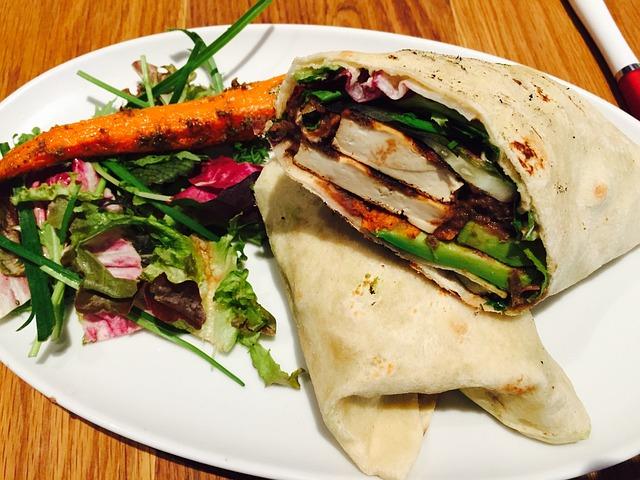In a world bursting with culinary possibilities, the journey to crafting a vibrant vegan or vegetarian meal plan is like painting on a canvas of endless flavors and colors. Imagine a symphony of fresh vegetables, legumes, grains, and fruits coming together to create a harmonious masterpiece that delights both the palate and the soul. Embracing a plant-based lifestyle is not just a dietary choice; it’s a joyful adventure into a realm of health, sustainability, and creativity. Whether you’re a seasoned herbivore or a curious newcomer, building a meal plan that aligns with your vegan or vegetarian aspirations can be an exhilarating experience. Join us as we explore the art of constructing a nourishing and delectable plant-based menu that will energize your body, nurture your spirit, and transform the way you think about food. With optimism and a dash of creativity, let’s embark on this delicious journey together.
Crafting Plant-Powered Plates with Purpose
Embracing a vegan or vegetarian lifestyle opens up a vibrant world of flavors and nutritional possibilities. When crafting your meal plan, focus on diversity to ensure you’re getting all the nutrients your body craves. Start by incorporating a rainbow of fruits and vegetables, as each color provides unique health benefits. Consider adding the following to your plate:
- Greens: Spinach, kale, and broccoli are packed with iron and calcium.
- Reds: Tomatoes and red peppers offer a wealth of antioxidants.
- Oranges: Carrots and sweet potatoes are rich in vitamin A.
To keep your meals exciting and nutritious, integrate a variety of plant-based proteins such as beans, lentils, tofu, and quinoa. These not only satiate hunger but also provide essential amino acids. Spice things up with herbs and spices like turmeric, cumin, and cilantro to enhance flavors and boost the nutritional profile of your dishes. Remember, a well-thought-out meal plan is not just about eating; it’s about nourishing your body and soul with intention and joy.

Harnessing Nutritional Know-How for Vibrant Veggie Meals
Unleashing the full potential of plant-based meals begins with understanding the vibrant palette of nutrients available in the world of fruits, vegetables, grains, and legumes. By focusing on diversity, you can ensure that your meals are not only delicious but also nutritionally balanced. Start by incorporating a wide range of colorful vegetables and fruits into your daily diet. These natural powerhouses are rich in vitamins, minerals, and antioxidants that contribute to overall well-being and vitality.
Consider the following tips to elevate your plant-based meal planning:
- Protein Powerhouses: Include a variety of protein sources like lentils, chickpeas, tofu, and quinoa to meet your dietary needs.
- Whole Grains Galore: Opt for whole grains such as brown rice, barley, and oats to boost fiber intake and maintain energy levels.
- Healthy Fats: Incorporate nuts, seeds, and avocados to ensure adequate intake of essential fatty acids.
- Colorful Veggie Variety: Aim to fill half your plate with a rainbow of vegetables to maximize nutrient intake and add flavor.
- Spices and Herbs: Use fresh herbs and spices to enhance flavors without adding excess calories.
By blending these elements into your meal planning, you can create vibrant, satisfying dishes that nourish both body and soul, paving the way for a joyful culinary journey.
Embracing Variety: From Leafy Greens to Protein-Rich Pulses
Creating a balanced vegan or vegetarian meal plan is an art of blending colors, flavors, and textures. Leafy greens such as kale, spinach, and Swiss chard are not only nutrient powerhouses but also add a vibrant splash to your meals. These greens are excellent sources of vitamins A, C, and K, and they also provide essential minerals like iron and calcium. To make your meals more exciting, consider mixing them with other colorful vegetables like bell peppers, carrots, and beets. The key is to embrace the spectrum of plant-based ingredients available and let your creativity shine on the plate.
Protein-rich pulses such as lentils, chickpeas, and beans should be staples in your meal plan. They not only offer a hearty texture but are also packed with protein, fiber, and essential nutrients like magnesium and potassium. Pulses are incredibly versatile and can be used in a variety of dishes, from comforting stews and soups to refreshing salads and savory patties. Here are some ideas to incorporate them into your diet:
- Make a chickpea salad with tomatoes, cucumbers, and a lemon-tahini dressing.
- Prepare a lentil stew with carrots, celery, and a hint of cumin for a warming dish.
- Create black bean tacos topped with avocado, cilantro, and lime for a zesty meal.
By embracing the diversity of plant-based foods, you can craft a meal plan that is not only nutritious but also delightful and satisfying.
Mindful Meal Planning: Savoring Seasonal and Sustainable Choices
Embracing a vegan or vegetarian lifestyle doesn’t just mean swapping meat for plant-based alternatives; it’s an opportunity to engage with the seasons and support sustainable practices. To craft a meal plan that’s both nourishing and environmentally conscious, consider these vibrant strategies. Start by exploring local farmer’s markets or community-supported agriculture (CSA) programs. These avenues often offer a bounty of seasonal produce, ensuring your meals are fresh and flavorful. Not only does this support local growers, but it also reduces the carbon footprint associated with long-distance food transportation.
Incorporate a variety of plant-based proteins such as legumes, nuts, and seeds to ensure a balanced intake of essential nutrients. Mixing and matching these with an array of colorful vegetables not only creates visually appealing dishes but also ensures a diverse nutrient profile. Here are some tips to get started:
- Experiment with hearty grains like quinoa, farro, or millet as a base for your meals.
- Include fermented foods such as tempeh or kimchi to promote gut health.
- Spice up your dishes with herbs and spices that enhance flavor without extra calories.
By aligning your meal planning with the rhythms of nature, you cultivate a mindful eating practice that benefits both your well-being and the planet.



